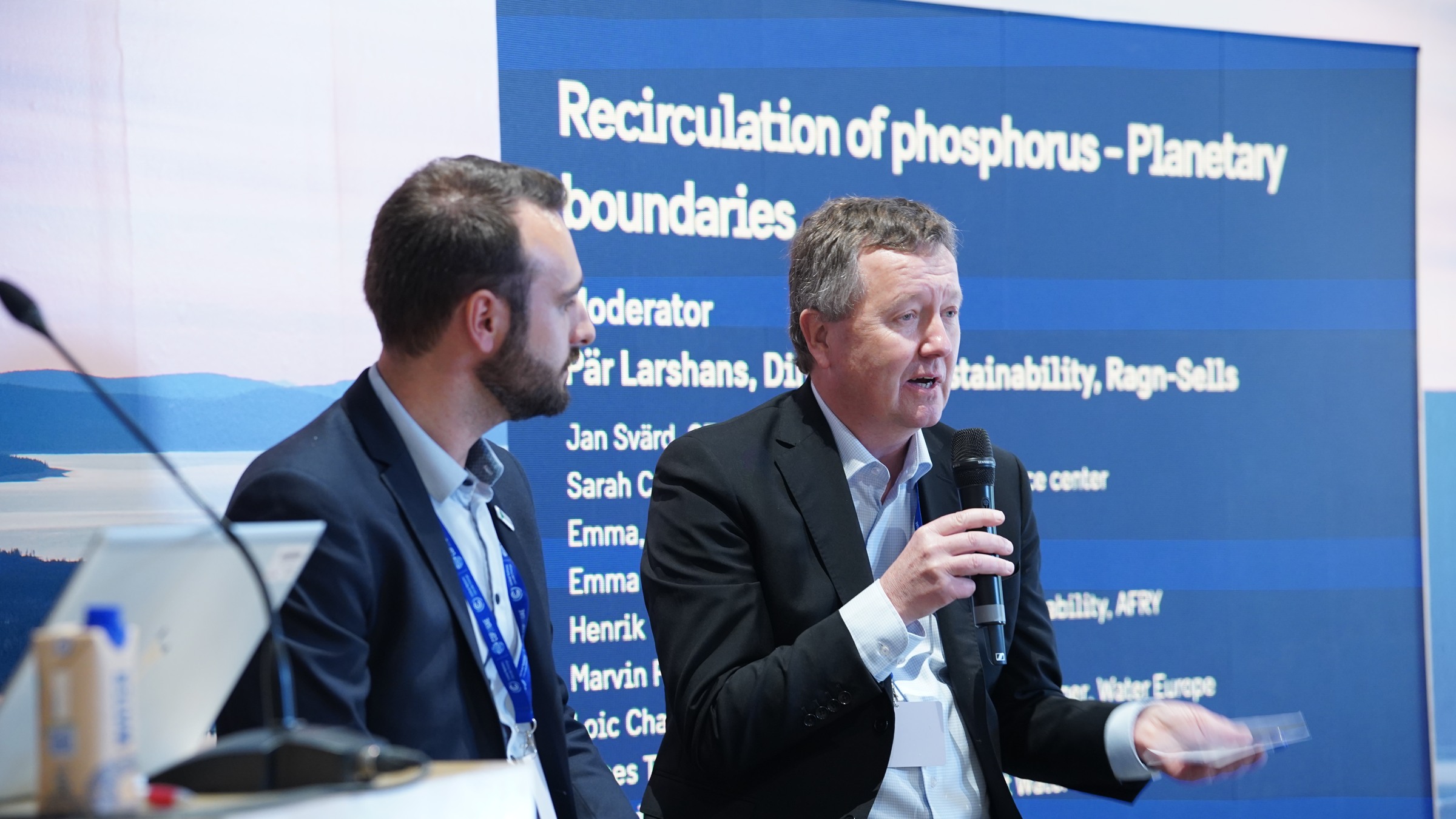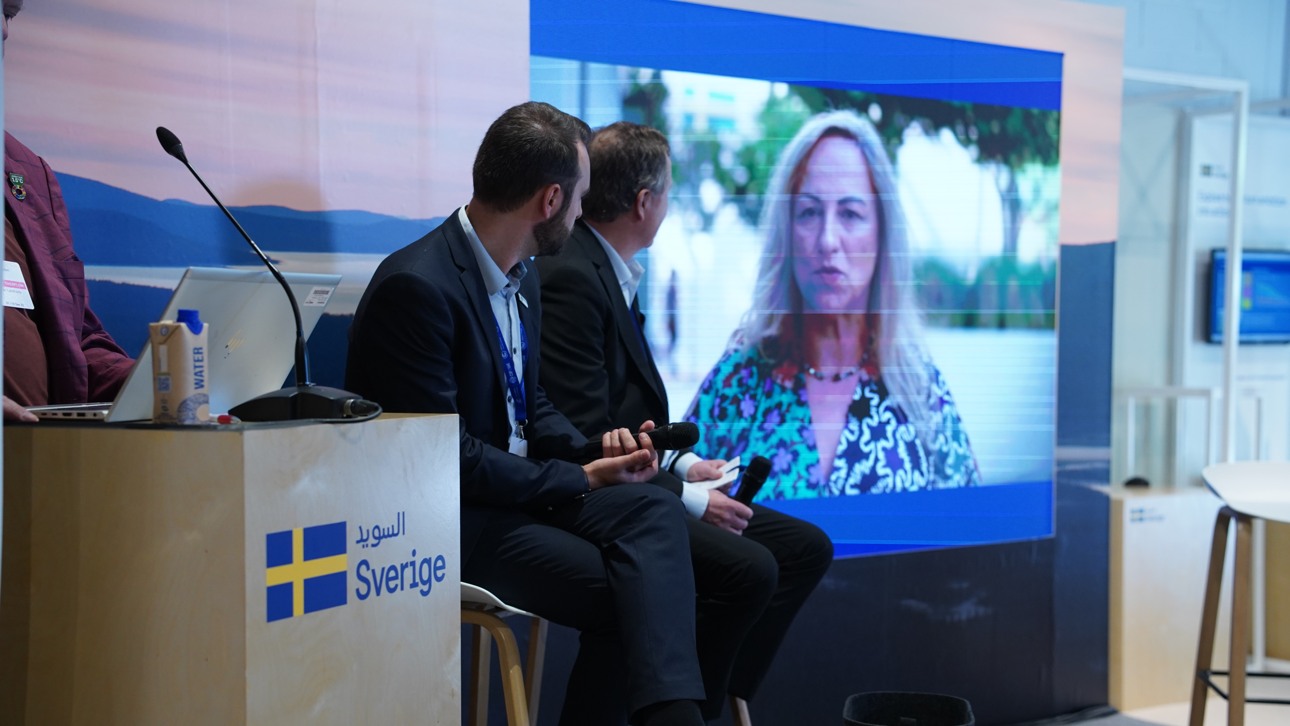
How recovered phosphorus can help feed the planet
A recent climate change seminar stressed that the need to recirculate phosphorus is more urgent than ever. So while current regulations hinder such circular solutions in regions like the EU, there’s a growing international market for recovered phosphorus.
08 Mar 2024The “Recirculating of phosphorus — planetary boundaries” seminar put the key nutrient for agriculture front and centre at COP28 in Dubai, the 2023 edition of the United Nations’s annual gatherings for addressing climate change. Hosted at the Swedish Pavilion on December 10 and led by Pär Larshans, Director of Sustainability at Ragn-Sells, it featured a discussion on the critical importance of phosphorus for global food supply, but also how the current levels of phosphorus in the environment (remnants of its linear nutrient cycle) is more than three times the boundary of what the planet can handle.
According to Sarah Connell, a sustainability scientist from the Stockholm Resilience Centre and part of the seminar panel, that much phosphorus affects a wide range of ecosystems but connects to a single through-thread.
– The global ocean, dead zones and local-scale eutrophication problems [when an overabundance of nutrients in a body of water leads to a depletion of oxygen] are symptoms of the same social challenge . And the response is quite simply to recover and reuse phosphorus as much as possible, explained Connell.
A circular nutrient cycle for phosphorus would provide a sustainable alternative to the current finite source of the nutrients’ raw material (and its associated carbon emissions): mined phosphate. But it would also prevent more leftover phosphorus from being added to the environment.
It’s the only true path forward for a planet where phosphorus is necessary to feed a growing population. And the best source for reclaimed phosphorus is waste.
A new perspective needed on waste
Creating circular supplies for phosphorus is now possible with new and innovative technology, like the Ash2Phos process from the Ragn-Sells subsidiary EasyMining. It recovers more than 90% of the phosphorus from sewage sludge ash without contaminants and can effectively turn wastewater into a resource.
However, as Professor and Vice President of Water Europe Chrysi Laspidou explained at the seminar, a total shift is needed when it comes to how people view waste – along with a corresponding shift in regulations – before the potential of recovered nutrients can be fully unlocked.
– So far, we've been seeing wastewater treatment plants as places where you dispose of what you don’t need. We really need to change our perspective and see them as resource plants. Because there is so much in the waste, and we cannot afford to just bury it in a landfill or dispose of it. We need to extract these nutrients, she explained.

Phosphorus reclaimed from Ash2Phos has been proven to be the same quality as mined phosphorus used today in both fertilisers and animal feed. Yet current EU legislation puts more focus on the origin of a nutrient. In the case of nutrients on animal feed, it’s a total ban on any with waste as an origin. That means only half of the circular solutions from recovered phosphorus can be implemented…at least in the EU.
Developing a global market for recovered phosphorus
A panel member of the “Recirculation of phosphorus” seminar also worth noting was Marvin Friesen, CEO of the Friesen Group. The Canadian-based feed company signed a deal in late 2023 to partner with EasyMining and German utilities company Gelsenwasser to develop premium feed products made in North America and using recycled phosphorus from Europe.
Friesen spoke about the partnership, made possible due to Canada's more progressive nutrient recovery policies, and the enormous potential it represents to help feed the planet’s growing population.
– We know that mined phosphorus is a limited resource, and the recovery and recycling of nutrients is a key element in sustainable agricultural production…Replacing mined phosphorus with recycled phosphorus in North America is the first step, he said.